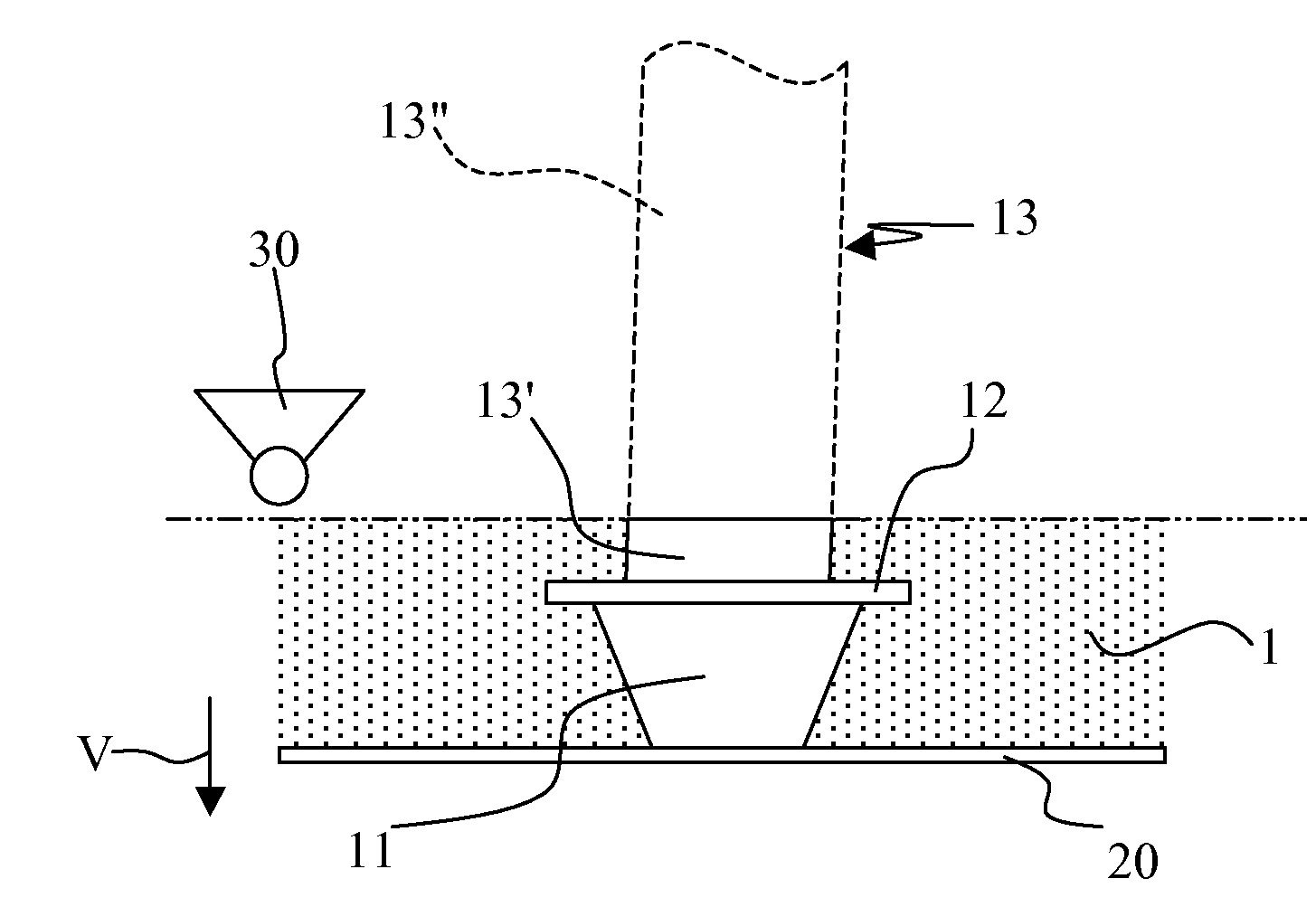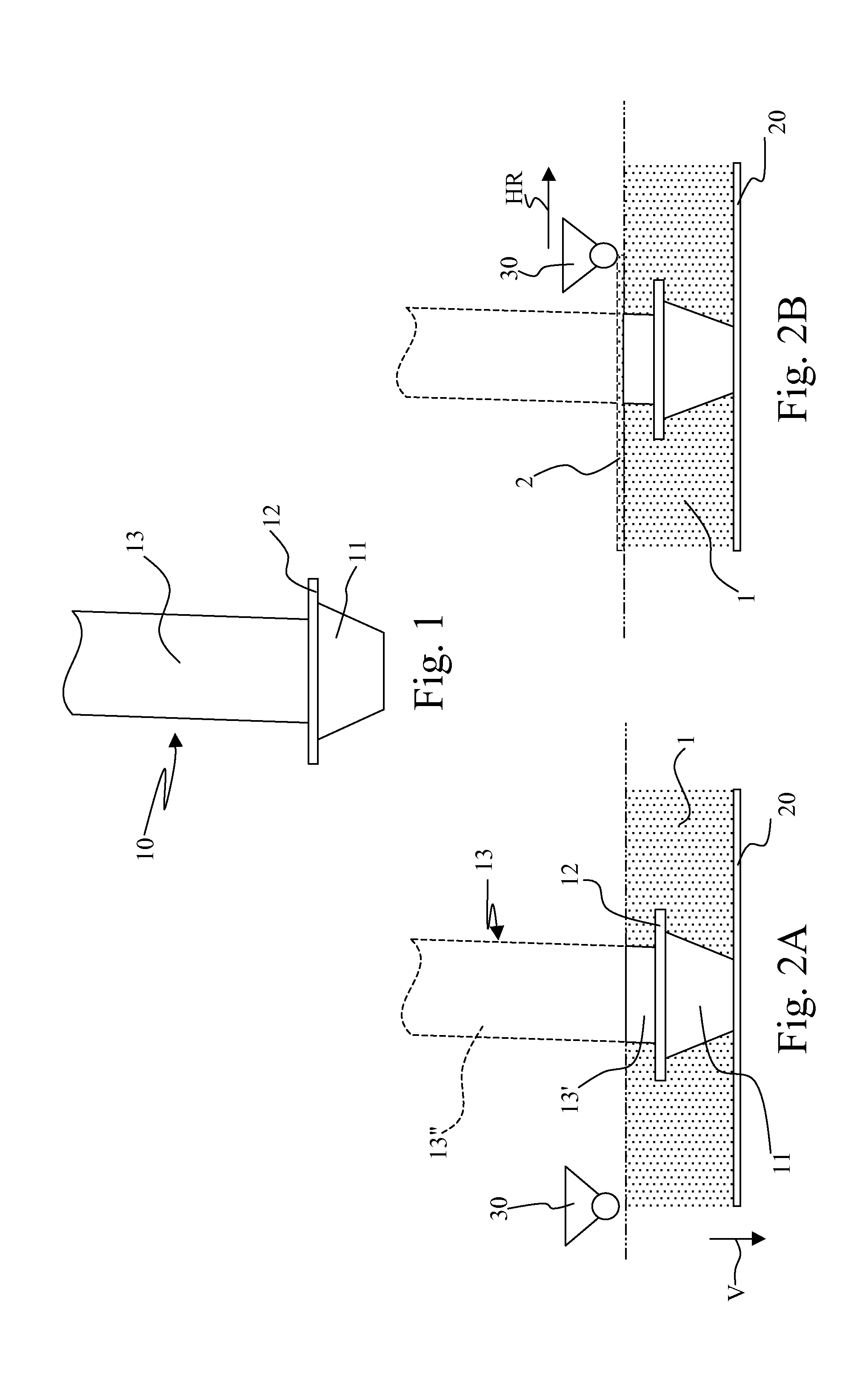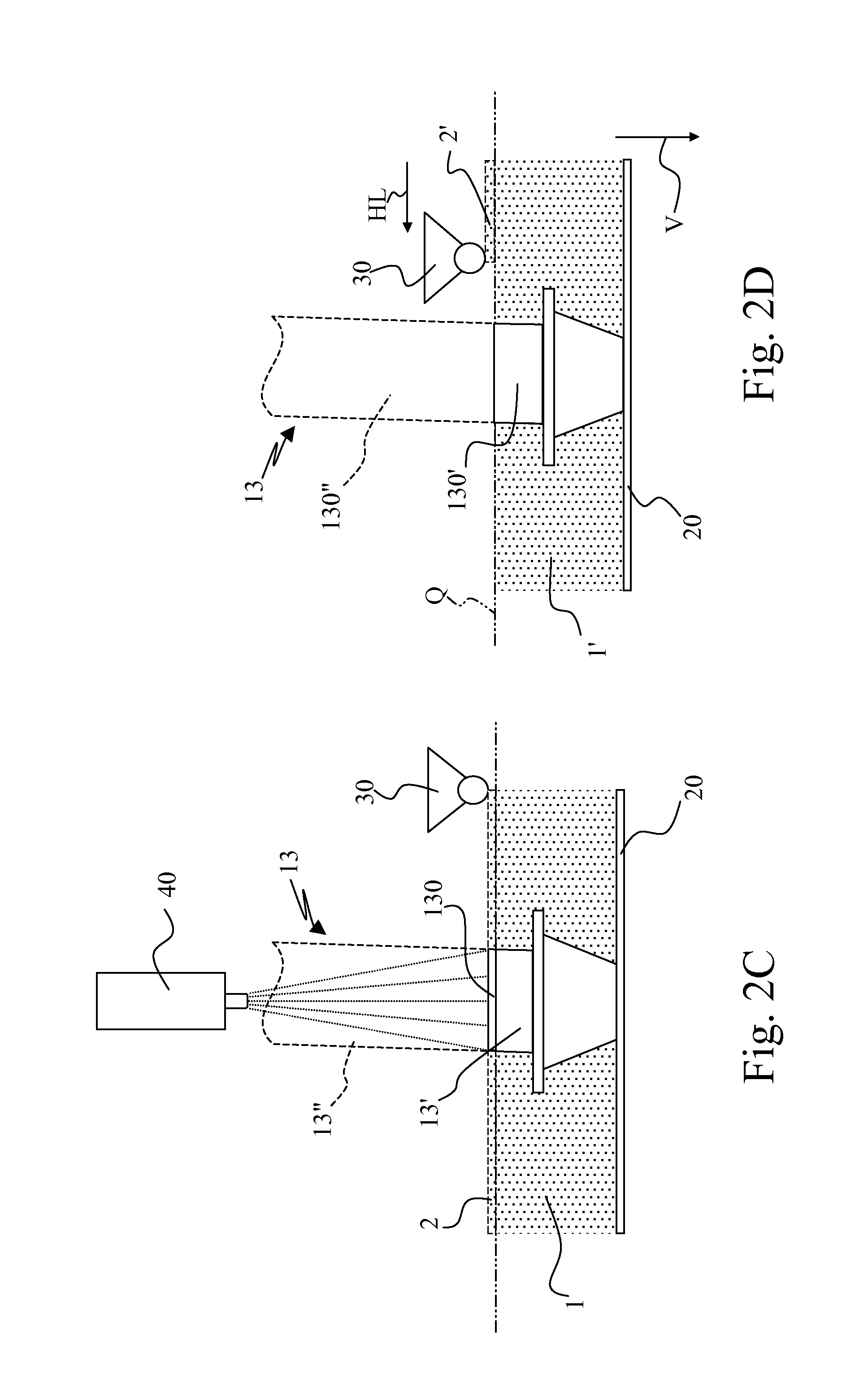Mass production of tridimensional articles made of intermetallic compounds
a technology of intermetallic compounds and tridimensional articles, which is applied in the direction of metal-working equipment, machines/engines, electron beam welding equipment, etc., can solve the problems of difficult mass production at reasonable costs, difficult to obtain an article produced with a tial intermetallic compound with exactly the composition and structure desired, and the content of articles of this type must be extremely low, so as to achieve the optimal use of materials, the effect of reducing the cost of mass production of articles, and reducing the oxid
- Summary
- Abstract
- Description
- Claims
- Application Information
AI Technical Summary
Benefits of technology
Problems solved by technology
Method used
Image
Examples
example 1
Production of Turbine Blades Made of Intermetallic Compounds by Electron Beam Melting
[0087]Powders of the intermetallic compound γTiAl 48Al-2Cr-2Nb were prepared according to the specifications supplied by General Electric Aviation (USA) to produce low pressure gas turbine blades. The intermetallic compound used has a melting temperature of approximately 1550° C.
[0088]The powders were loaded into the distributor located inside the melting chamber of a EBM machine identified by the abbreviation A2 and manufactured by ARCAM AB (Sweden).
[0089]The preheating step was performed using only the focused electron beam until taking the powders to a temperature of approximately 900° C.
[0090]The mathematical model used was configured for the simultaneous production of 30 turbine blades all with the same properties of geometrical shape and dimensions.
[0091]The production process, performed under high vacuum, required a total of approximately 30 hours to complete production and cooling in a heliu...
PUM
| Property | Measurement | Unit |
|---|---|---|
| Grain size | aaaaa | aaaaa |
| Grain size | aaaaa | aaaaa |
| Temperature | aaaaa | aaaaa |
Abstract
Description
Claims
Application Information
 Login to View More
Login to View More - R&D
- Intellectual Property
- Life Sciences
- Materials
- Tech Scout
- Unparalleled Data Quality
- Higher Quality Content
- 60% Fewer Hallucinations
Browse by: Latest US Patents, China's latest patents, Technical Efficacy Thesaurus, Application Domain, Technology Topic, Popular Technical Reports.
© 2025 PatSnap. All rights reserved.Legal|Privacy policy|Modern Slavery Act Transparency Statement|Sitemap|About US| Contact US: help@patsnap.com



